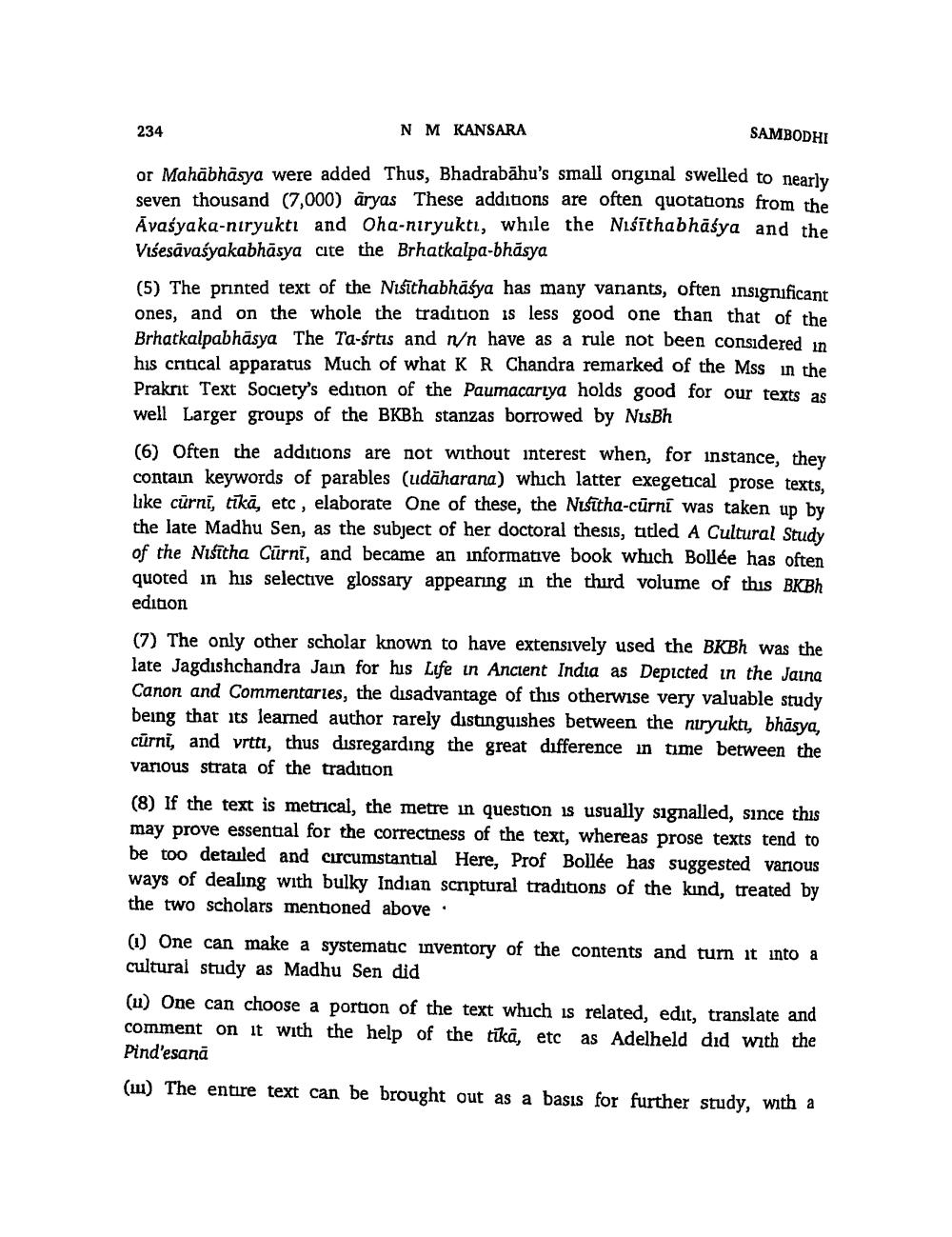________________
234
NM KANSARA
SAMBODHI
or Mahābhāsya were added Thus, Bhadrabāhu's small original swelled to nearly seven thousand (7,000) aryas These additions are often quotations from the Āvasyaka-niryukti and Oha-riryukti, while the Niśīthabhāśya and the Višesävaśyakabhāsya cite the Brhatkalpa-bhäsya (5) The printed text of the Nisīthabhäsya has many vanants, often insignificant ones, and on the whole the tradition is less good one than that of the Brhatkalpabhäsya The Ta-śrtis and n/n have as a rule not been considered in his critical apparatus Much of what K R Chandra remarked of the Mss in the Prakrit Text Society's edition of the Paumacarlya holds good for our texts as well Larger groups of the BKBh stanzas borrowed by NisBh
(6) Often the additions are not without interest when, for instance, they contain keywords of parables (udäharana) which latter exegetical prose texts, like cūrni, tīkā, etc, elaborate One of these, the Nisītha-cūrnī was taken up by the late Madhu Sen, as the subject of her doctoral thesis, titled A Cultural Study of the Nisītha Cūrni, and became an informative book which Bollée has often quoted in his selective glossary appearing in the third volume of this BKBH edition (7) The only other scholar known to have extensively used the BKBh was the late Jagdishchandra Jain for his Life in Ancient India as Depicted in the Jaina Canon and Commentaries, the disadvantage of this otherwise very valuable study being that its learned author rarely distinguishes between the niryuktı, bhāsya, cūrni, and vrtti, thus disregarding the great difference in time between the various strata of the tradition
(8) If the text is metrical, the metre in question is usually signalled, since this may prove essential for the correctness of the text, whereas prose texts tend to be too detailed and circumstantial Here, Prof Bollée has suggested various ways of dealing with bulky Indian scriptural traditions of the kind, treated by the two scholars mentioned above (1) One can make a systematic inventory of the contents and turn it into a cultural study as Madhu Sen did (u) One can choose a portion of the text which is related, edit, translate and comment on it with the help of the tikä, etc as Adelheld did with the Pind'esanā
(w) The entire text can be brought out as a basis for further study, with a




